"Singapore Laksa La Mian" [Prima Taste] (this one) (or look here), augmented with chopped fresh daun kesum (a.k.a. Vietnamese coriander), tau pok each sliced in two, mung bean sprouts & large wild shrimp (each halved lengthwise), plus shucked fresh blood cockles** (or clams?) right at the end.
** I suspect these may well have come from Cape Cod (see here for an article on them) and may or may not be bearded ark clams alternatively. Other US East Coast locations are certainly possible. Blood cockles are grouped under ark clams, it would seem.
On the way there:
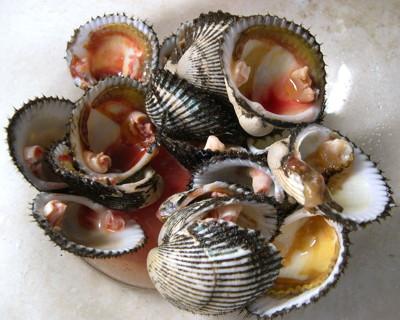
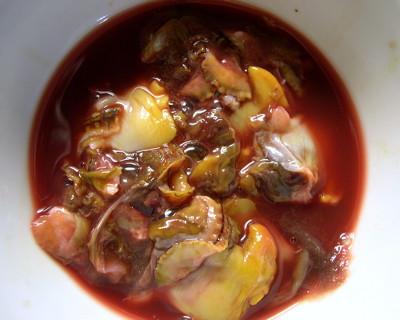
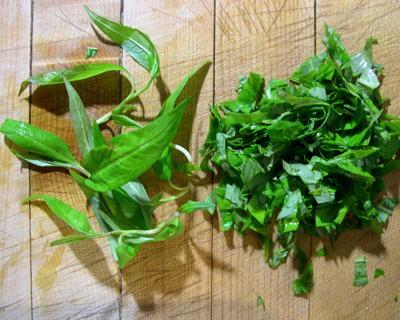
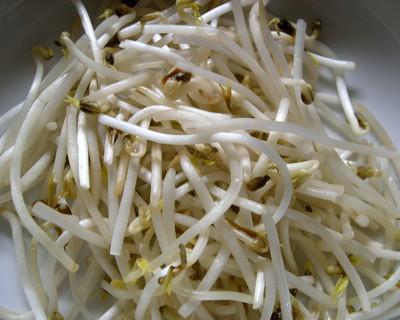
Bowled & garnished w/ sprigs of daun kesum.
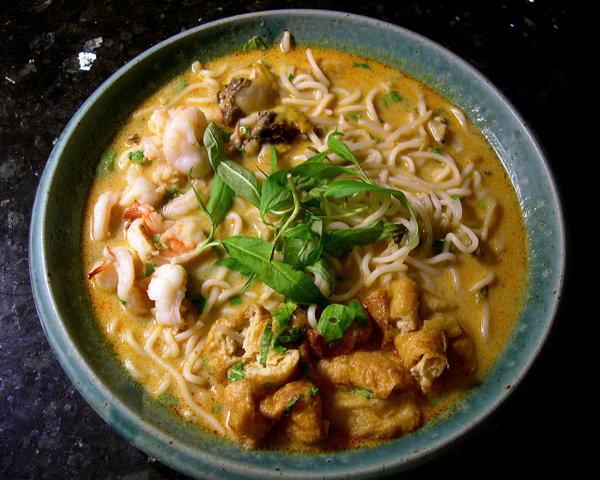
It's only recently that I've seen fresh, live blood cockles/clams in these parts. These are considered by some to be essential for a bowl of curry laksa, including laksa lemak, whether Nyonya-style or KL-style or Katong-style or whatever (They DO NOT go with assam laksa). I for one missed having a bowl or two of laksa with fresh "see hum" (rendition in Cantonese for this type of cockle) in the USA – remedied now. (Frozen packaged pre-cooked blood cockles are available - they are seldom good) They are also widely known as 血蚶 in Chinese, literally "blood clam/cockle".
(I styled this rendition with thoughts of Katong Laksa in mind, keeping the ingredients to what would go into that style, but this is NOT a true bowl of "Katong Laksa")
ETA: These fresh blood cockles were appreciably larger than the traditional "see hum" seen/found and used in laksa and in many other dishes (e.g. char kway teow) in SE Asia. These were around 2½ inches across on average, with bearded shells (see the picture), whereas the "see hum" usually found in SE Asia tend to be only 1½ inches across or so and usually have unbearded/"clean-shaven" shells.
I've posted earlier renditions of augmented (and un-augmented) "Prima Taste Singapore Laksa La Mian" here on eG. See here for a summary for some and links to the various posts.





